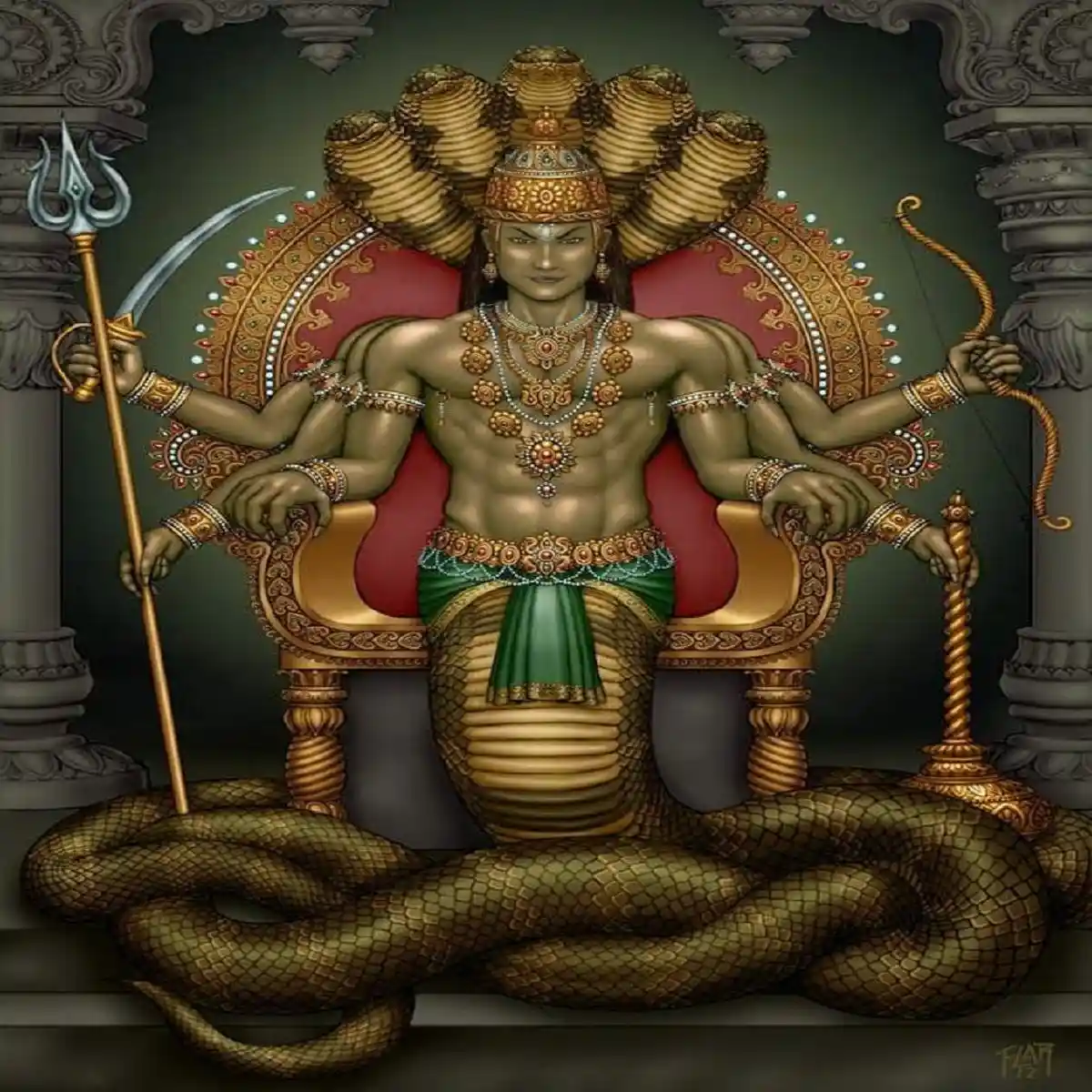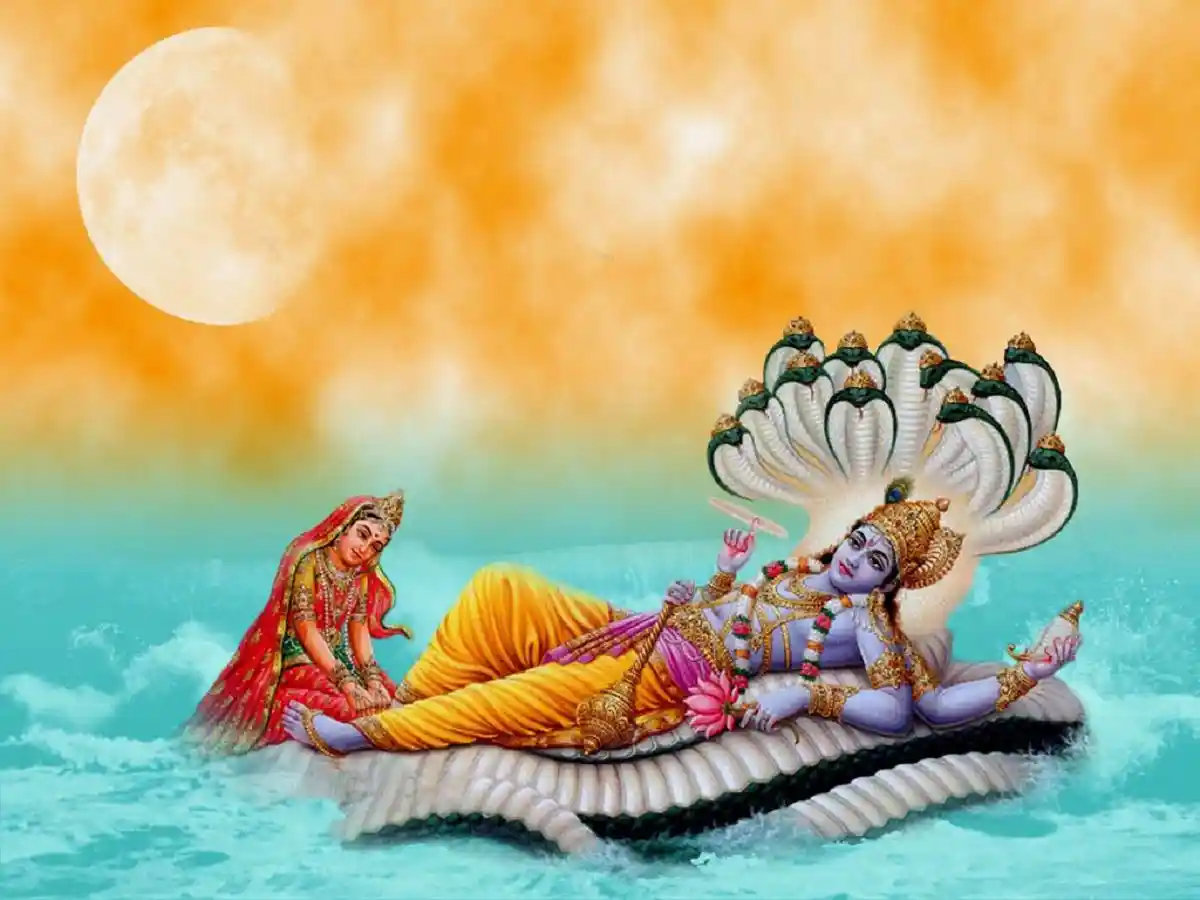Shesha Naga: The serpent that rules the cosmos
The eternal creature, unaffected by yugas and *pralayas,* will continue to live after everything has perished and turned into ashes. It is sometimes an umbrella during Krishna's journey to Mathura, and sometimes the bed of Lord Vishnu. The Shesha Naga is the gigantic serpent that holds the *grahas* (planets) and *upagrahas* *(satellites).*

Shesha Naga, the king of the snake clan, Image source- Pinterest.com
Shesha Naga, or Adi-Shesh, is the King of snakes. From the Treta yuga to the present Kali-yuga, he has had a significant role in Hindu mythology. The name "Shesha" comes from the Sanskrit word "eternal" or "everlasting." That is why Shesha is believed to exist now and will exist even after the apocalypse.
The Mahabharata tells the tale of Shesha Naga's birth. Kashyapa, a sage, married Daksha Prajapati's seventeen daughters, one of whom was Kadru. She was the most adored of all Kashyapa's wives, and Kashyapa was ecstatic with her. So he asked her to ask for a boon she wished for, to which she pleaded for a thousand sons. Her wish was granted, but she delivered a thousand eggs after only a few days, much to her surprise. Even though she was perplexed by the situation, she decided to nurture them in a warm spot.
Days passed, and the eggs hatched, eventually growing into thousands of serpents. Shesha Naga, was the elder brother of powerful creatures like Vasuki, Takshaka, and Airavat. While his brothers were cruel and found it pleasing to harm others, he was the noblest and most ethical of them all who found his brother's deeds annoying and disgusting. He decided to leave his family and flee somewhere because he could no longer tolerate their actions.
He meditated in places like Badarikashrama, Gandhamadhana, Pushkara, and the Himalayas. He eventually found peace in his Tapasya (meditation) and continued to practice it despite his shrinking body and lack of food and water. Lord Brahma was highly impressed by his devotion and dedication, so he appeared in front of him and asked him to seek a blessing. Shesha begged for the quality of self-control to be bestowed upon him so that he could continue his ascetic Tapasya.
Lord Brahma was pleased to hear such a request and granted him the boon, instructing him to meditate beneath the unstable earth to stabilize it. Shesha complied with his request; however, he has not been seen since and is thought to be residing in the Patala, the Earth's deepest layer.
Shesha Naga is depicted in Hindu epics and scriptures as a gigantic five-headed serpent who carries the earth and all other planets of the universe on his hoods. The Kurma (tortoise) and Shesha Naga are thought to hold the earth together and thus stabilize it. Shesha is described as a massive snake with large coils, and time moves forward every time he uncoils his body. When Kurma moves or Shesha yawns, an earthquake occurs as they support each other.
Shesha was an ardent devotee of Lord Vishnu who constantly prays for him and sings his glorious tale from all his mouths. For his strong determination to worship Vishnu, he was also made his Vahana (carrier). Lord Vishnu rests on his divine throne, which is nothing but the large coiled body of Shesha Naga that floats above the Khirasagara, the ocean of milk. This form of Vishnu is referred to as Anantashayana, as he **resides on Ananta (another name for Shesha Naga).
Shesha is represented in the Bhagavad Gita as a manifestation of Vishnu himself. This is the reason why snakes occupy a privileged position in Hindu mythology. Shesha Naaga has descended to earth in many incarnations, of which his incarnation as Maharshi Patanjali was the most beneficial for humankind. He passed on his yoga knowledge, which became known as the Patanjali Yoga Sutras.
The mysterious stories of Shesha Naga fascinate people and inspire so many arts, writings, and sculptures. In today's time, Adi Shesha is worshipped in many temples. There are numerous rituals dedicated to him, including Naag Puja.

Lord Vishnu resting on Shesha Naga, Image source-News Track Life, NewsTrack


